— The featured artist of the 94th issue of Living the Photo Artistic Life magazine is AWAKE artist Cat Gray from the beautiful county of Devon in the south west of England. It’s exciting to be able to interview Cat here on Quill and Camera . . .
Q: What would you say inspires your work?
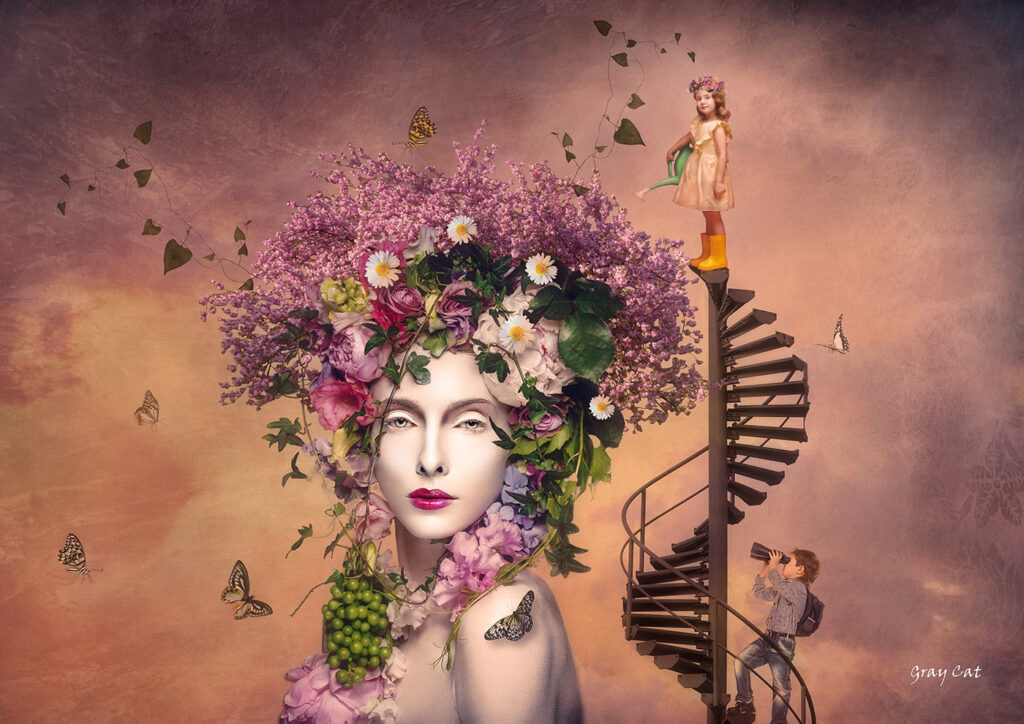
I think what I take most of my inspiration from (and certainly intend to do more of) is laying myself bare and visiting places in my head I don’t usually allow myself to go. Since I was a child, I’ve always had a stiff upper lip, and I’ve always found it hard to let people in. My art — whether I am taking humorous pokes at what it means to be a woman in her 50s, or expressing the anger or sadness I have experienced throughout my life — has always served as a type of therapy for me.
One of the artists who inspired me right from the beginning was Billa Bozem, a German artist beloved in the AWAKE community. I watched Sebastian’s tutorials on her artwork, and I was so in awe of her it drove me to work harder. Sadly, she recently passed away and we are all missing her greatly. She was the kindest, most inspiring person, and so generous with her comments and encouragement.
And of course, it goes without saying the wonderful community of artists I have met in the AWAKE and KAIZEN groups has been incredibly inspiring and supportive altogether. Getting feedback and constructive criticism from them is a vital part of the process for me. Their friendship and enthusiasm about my work makes all the difference.
Q: What does “living an artistic life” mean to you?
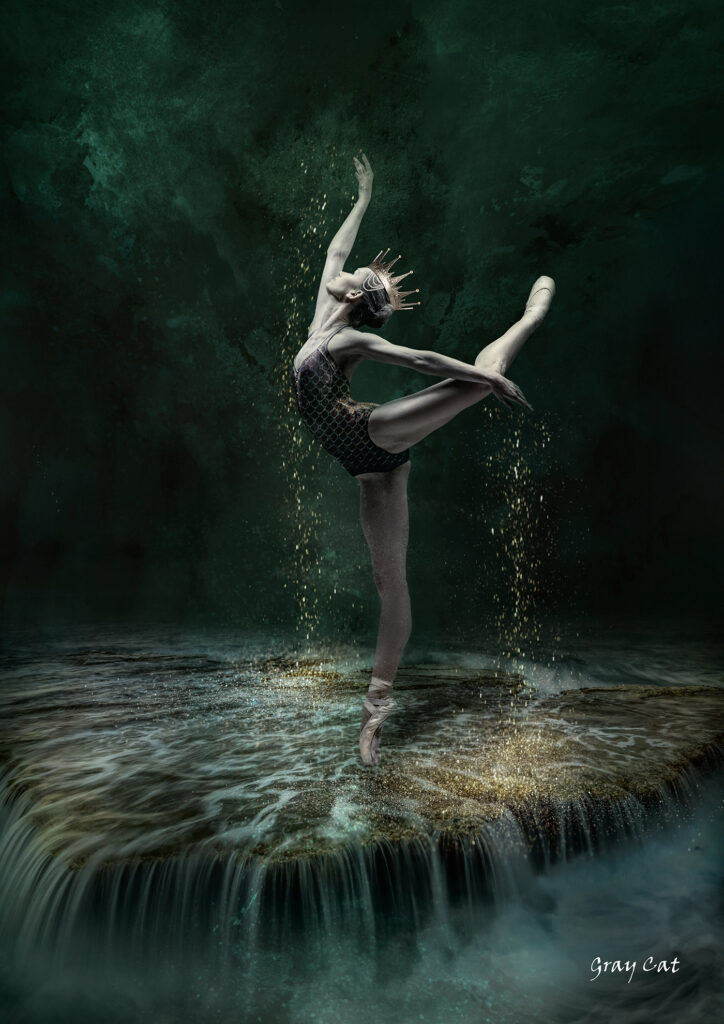
Doing whatever feels right as an artist and doing it for YOU.
I discovered Sebastian’s Photoshop Artistry course shortly after I came out of a 21-year marriage. The business I had built was no more; I had lost my home and everything I owned in a fire; my youngest had gone off to university; and I had just turned 50 — all in the space of three months!
Life had thrown everything it had at me all at once and I was still standing. But not without contemplating my life and what I considered important. And art became very important to me.
Living an artistic life, to me, is about living creatively and authentically. This whole creative, artistic journey has felt like a metamorphosis — as an individual so very nearly broken yet still standing . . . as a woman finding her passion in her 50s . . . and as a newly awakened artist eager to test herself each and every day.
Q: Can you describe your creative process? (Do you follow any kind of system?)
It might seem unorthodox, but I almost always approach my work by focusing on a feeling and honing in on it as I develop my canvas. I will look for images that express for me a word, an emotion, or a thought. And of course certain things recur because of how they resonate with me. For instance, movement within my art is often present (the movement of water is particularly emotive for me). And I enjoy featuring strong women as a reflection of my own experiences and triumphs.
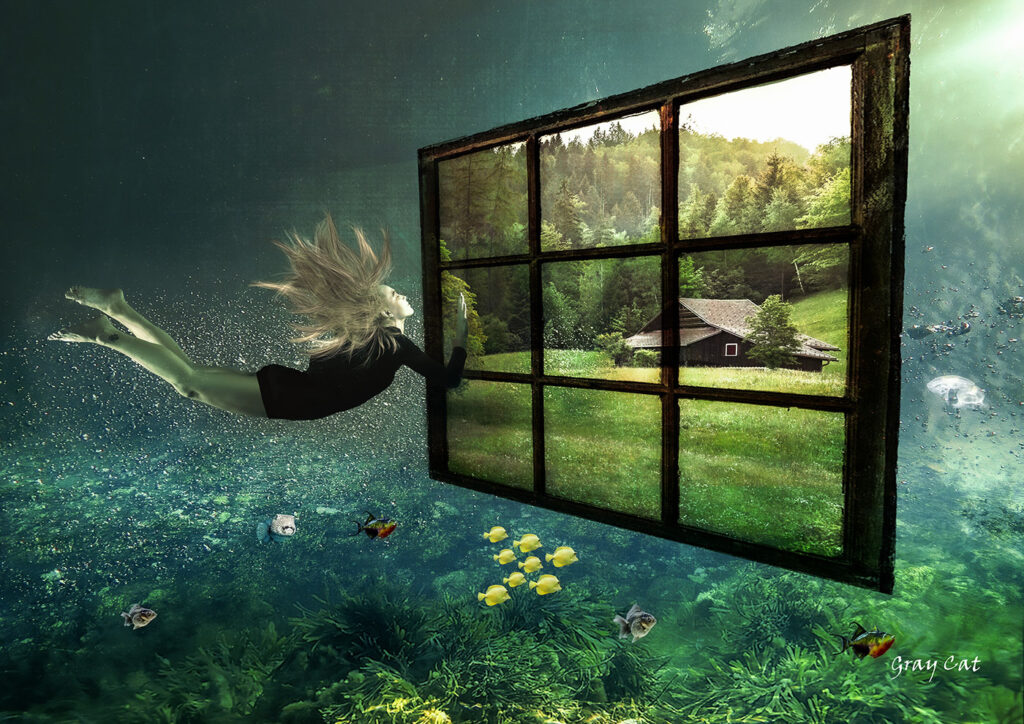
When I’m uninspired but want to play around, I tend to do “finger exercises” — throwing some images over a background, playing with blend modes and masks, and just seeing what happens.
By definition nothing here has to be perfect (which is why this approach doesn’t come naturally to someone who is a perfectionist in her daily life!), but I enjoy how liberating it can be.
And you never know when something like this might take on a life of its own.
For example, I’m currently working on a piece that started off as a finger exercise, and I’ve become quite fond of it. Having taken flight, I’ll carry it further. It’s a fun poke at the pageantry that exists in the culture of domesticity (within which I grew up and played my role dutifully), where a 1950s housewife is herself half vacuum cleaner and tethered to the wall socket. Sort of a humorous jab at the symbiotic relationship I’ve many a time felt I’ve had with my own vacuum cleaner, having kept a home full of dogs and cats and a family of horse owners.
One thing I do might be of interest to other Photoshop artists. I always add a text layer to my compositions so I can toggle it on and write notes to myself about any ideas I have during the process of creating the piece. These are simply bullet points — mostly ideas for what I might want to work into the composition or changes I may want to experiment with— but I find that this really helps me clarify my process as I go. It also helps continually pull me forward as I work.
Here for instance are my notes for that piece I mentioned, which I’ve affectionately named “Vacuum Lady”:
surreal
cushions plumped
man in chair string vest
western belt
sky in ceiling
picket fence / outside scene / tulips
mirror
shadows
tone down top?
opacity on windows
rug
little details
plant / vase / table
daffodil rubber gloves
flex / plug
feather duster house plant
Not everything has to make its way into the composition of course. Many of the ideas I conjure up won’t make the final cut, but they’re in there to remind me of what I could do, where I might take the piece as it evolves.
Q: What’s your next step as an artist, and where do you see your work going?
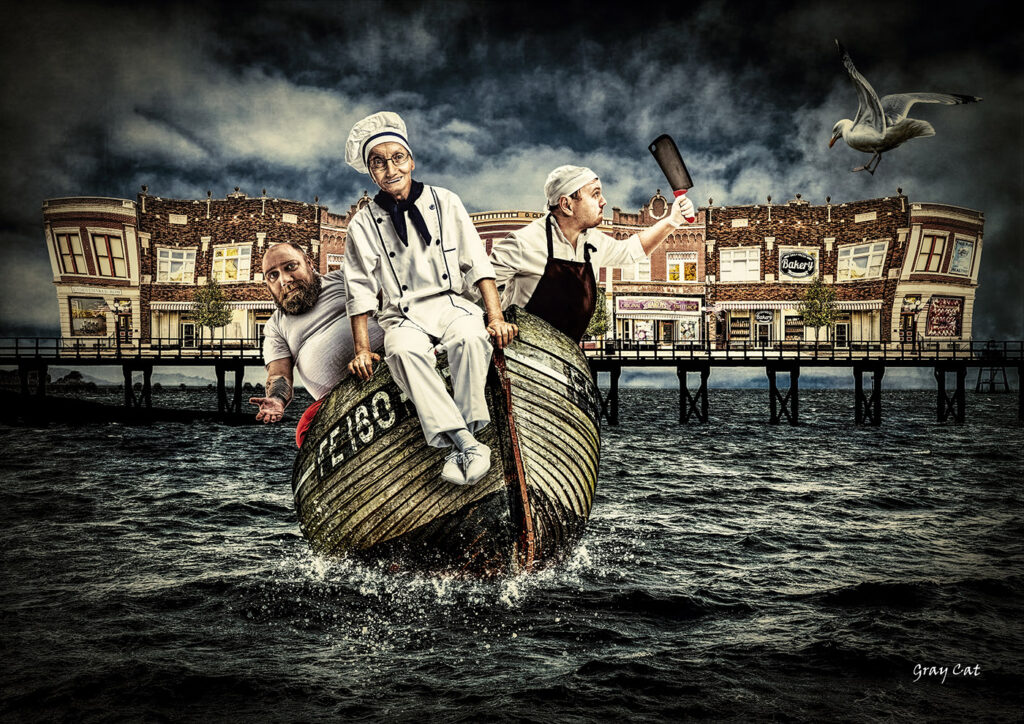
My next step is to push my boundaries a little and work at a deeper level. The humour and the jests are lots of fun but I’d like to give myself permission to dig deeper and see what I can produce if I raise the stakes.
I’m working on a series this year, using my daughter as a model. I don’t want to give too much away but I intend to work a lot with the concept of glamour against a backdrop of decay and see what I can discover there . . .
I started selling my work 3 years ago and have been pleasantly surprised by how well it has been received. I have a website where I sell my prints and I am leaving the Emporium I have been a part of for over a year to explore new opportunities. The adventure has only just started.
Q: Any advice for aspiring artists?
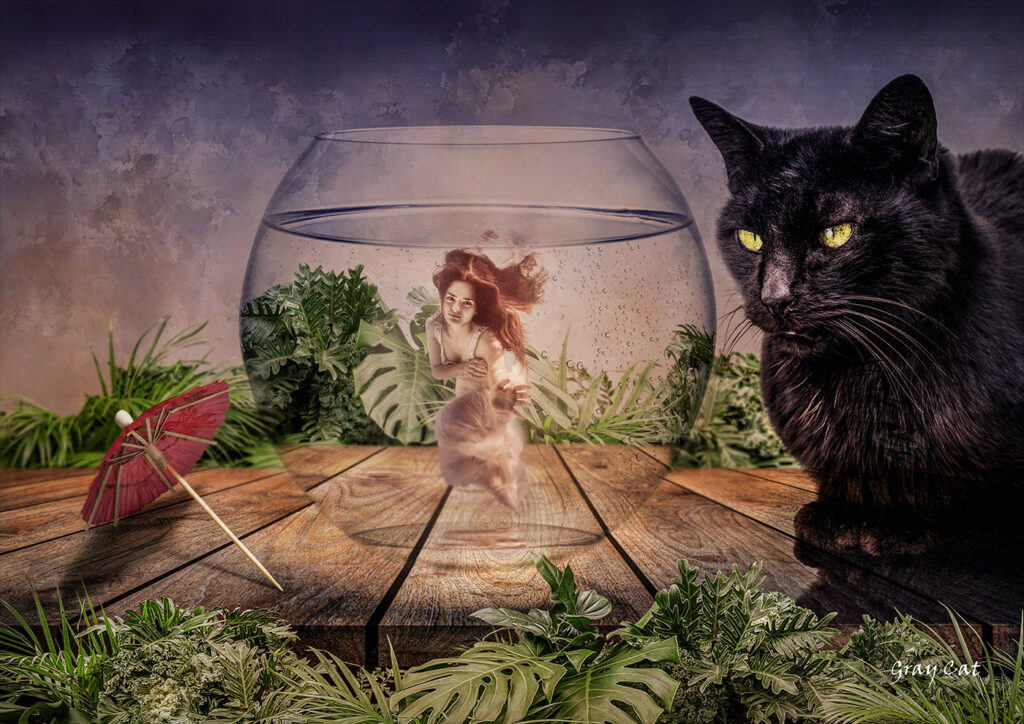
Put the work in. There is no short cut here. So plan to practice, practice, practice.
Watch the tutorials, study other artists, ask questions, collect or capture random photographs (you never know when they’ll be perfect for the next composition you’re working on).
And have the confidence in your work to put it out there. Get feedback, ask for constructive criticism, ask for suggestions or even for help. If you’re fortunate enough to be in the AWAKE group, you’ll find the artists there incredibly generous. And they understand this stuff. Whilst family and friends mean well, don’t listen to them when they try to direct you or tell you what kind of art you should be creating. That can kill your creativity. Having said that, maybe you’ll be lucky enough to find someone who gets it (and gets you). I now have an incredibly supportive partner and although he doesn’t always understand my work, he does appreciate the effort I’ve put in over the last few years and he’s happy to see me creating my art.
But above all else, back to what I started with: Put the work in. Work at it every day. Not that it’s actually work if you love creating art. But throw yourself into it. You will get better and better the more often you sit down to create.
.

